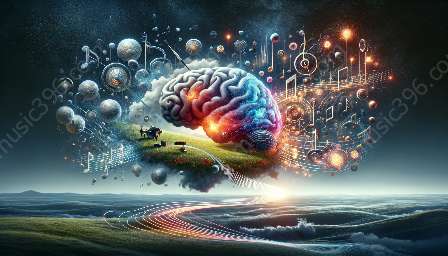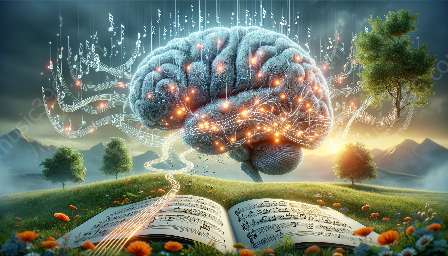Music has long been a subject of fascination for neuroscientists, with recent research shedding light on the neurological implications of musical syntactic processing. This topic is at the intersection of neuroscience of music and the study of music and the brain, offering insights into how the brain processes and understands musical structure and syntax.
Understanding Musical Syntactic Processing
Musical syntactic processing refers to the brain's ability to decipher the structural and hierarchical aspects of music, including rhythm, melody, harmony, and tonality. This cognitive function enables individuals to recognize patterns, anticipate musical events, and perceive the overall coherence of a musical piece.
Neuroscientific investigations have revealed that musical syntactic processing involves complex interactions across various regions of the brain, including the auditory cortex, prefrontal cortex, and parietal cortex. These regions work in harmony to decode the intricate syntactic elements present in music, leading to a deeper understanding of the neurological underpinnings of musical cognition.
Brain Regions Involved in Musical Syntactic Processing
The auditory cortex plays a fundamental role in processing the rudimentary features of music, such as pitch, timbre, and duration. Furthermore, studies have shown that the prefrontal cortex contributes to higher-order syntactic processing, allowing individuals to comprehend the structural hierarchy and organization of musical phrases and motifs.
Moreover, the parietal cortex is implicated in the spatial and temporal aspects of musical syntactic processing, aiding in the perception of rhythmic patterns and the integration of melodic and harmonic information. Together, these brain regions form a network that facilitates the intricate decoding of musical syntax.
Impact on Cognitive Functions
The neurological implications of musical syntactic processing extend beyond the realm of music itself and have profound effects on cognitive functions. Research has suggested that individuals with advanced musical syntactic abilities demonstrate enhanced cognitive flexibility, working memory, and attentional control.
Furthermore, musical syntactic processing has been associated with improved language processing skills, particularly in the realms of syntax and grammar. This correlation underscores the interconnectedness of music and language within the dynamic framework of cognitive neuroscience.
Therapeutic Applications
Given the multifaceted impact of musical syntactic processing on cognitive functions, its therapeutic potential has garnered significant attention. Music-based interventions, tailored to promote syntactic processing, have been explored as potential avenues for cognitive rehabilitation in patients with neurological conditions, such as stroke or traumatic brain injury.
Additionally, the incorporation of musical syntactic training in educational settings has shown promise in enhancing language acquisition and cognitive development in children, emphasizing the practical implications of understanding the neurological foundations of musical syntax.
Future Directions in Research
The exploration of musical syntactic processing continues to be a vibrant area of research within the neuroscience of music. Future studies may delve into the neural plasticity associated with syntactic processing, unraveling the mechanisms underlying the adaptation and refinement of musical cognition over time.
Furthermore, advancements in neuroimaging techniques, such as functional magnetic resonance imaging (fMRI) and electroencephalography (EEG), hold the potential to provide deeper insights into the real-time neurological dynamics accompanying musical syntactic processing, offering a comprehensive understanding of the brain's response to musical structure.
Conclusion
The study of the neurological implications of musical syntactic processing represents an intriguing convergence of neuroscience and music, illuminating the intricate mechanisms through which the human brain engages with and comprehends the syntactic complexities of music. By unraveling the cognitive and neural underpinnings of musical syntax, researchers continue to expand our understanding of the profound relationship between music and the brain, paving the way for innovative applications in neurorehabilitation, education, and beyond.




































